In 2023, President Xi Jinping solemnly proposed the Global Civilization Initiative, emphasizing that “different civilizations can coexist inclusively and learn from each other, playing an irreplaceable role in advancing human modernization and enriching the garden of world civilizations.” To promote dialogue and cooperation among civilizations, implement the spirit of the Ninth Trilateral Summit among China, Japan, and the Republic of Korea, and enhance cultural exchanges among Asian youth, the “Campus Asia+ Social Innovation Forum” was held at Peking University from July 4 to 6, 2025.
The forum was hosted by the School of International Studies (SIS), PKU, bringing together over 40 faculty and students from Waseda University (Japan), Korea University (Republic of Korea), Nanyang Technological University (Singapore), and PKU. With the theme “Inclusive Development in Asia: Social Innovation and Cross-Cultural Dialogue”, participants engaged in diverse discussions and in-depth exchanges on the challenges and future visions of inclusive development in Asia.
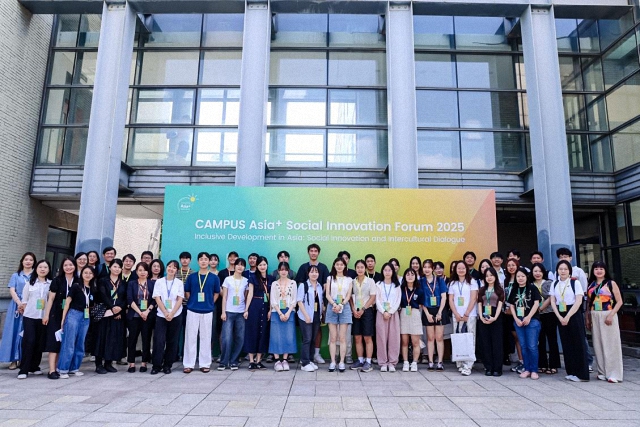
Group Photo of Participants
Through keynote lectures, field research, group discussions, and final presentations, the forum not only deepened Asian youths’ connections in cultural exploration and awareness of sustainable development, but also vividly reflected the institutionalized, regularized, and scaled-up progress of the “Campus Asia” program, injecting fresh vitality into higher education exchange and youth cooperation in Asia.
Exchange of Ideas: Academic Dialogue from Diverse Cultural Perspectives
To promote knowledge sharing across countries and disciplines in Asia, the forum invited four professors from China, Japan, the Republic of Korea, and Singapore to analyze major issues in inclusive development from different perspectives and to engage in in-depth discussions with students.
In the opening lecture, Prof. HE Jiani (Assistant Professor at the School of International Studies (SIS), PKU) led students through the ancient Chinese worldview centered on the concept of tianxia (“All Under Heaven”), exploring China’s inclusive relationship with the world. Using the “One World, One Family” presentation at the closing ceremony of the Beijing Winter Olympics as a starting point, she examined how tianxia continues to influence contemporary cultural narratives and national storytelling. Prof. He emphasized that the concept offers an important lens for understanding the historical trajectory of China’s external relations and for studying China–world interactions. The lecture encouraged students to explore how history continues to shape contemporary political imagination in China and Asia.
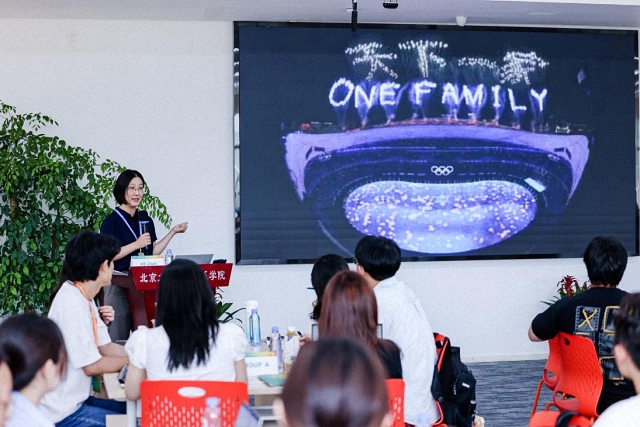
Prof. HE Jiani
Prof. Jonathan Tan (Associate Professor at Nanyang Technological University, Singapore) drew on behavioral economics research, using experimental paradigms and case analyses to explain how game-theoretic models can help understand social norms, trust mechanisms, immigrant integration, and cross-cultural innovation. He stressed that behavioral experiments are not only an academic method but also a practical tool for understanding real-world social interactions and testing policy effectiveness. He encouraged students to transform theoretical insights into practical solutions, applying innovative perspectives to break the “collective action dilemmas” in Asian societies.
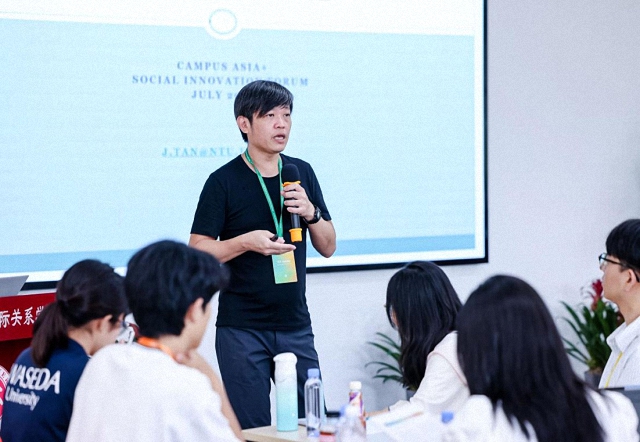
Prof. Jonathan Tan
In the third lecture, Prof. Koyama Toshiko (Associate Professor at the School of Social Sciences, Waseda University) presented “Innovative Pathways to Building Inclusive Societies,” showcasing how the Japanese company Heralbony uses a sustainable business model to break disability stereotypes and address the inclusion of marginalized groups. She engaged actively with students, encouraging them to conduct field observations of local accessibility environments, identify issues, and propose “zero-budget” interventions, thereby enhancing youth observation skills and initiative in inclusive social innovation.

Prof. KOYAMA Toshiko
In the fourth lecture, Prof. KIM Namkyu (Professor at Korea University) explored the game mechanisms and rationalist explanations behind inter-state conflicts from an international relations perspective. Combining game theory with historical cases, he analyzed the root causes of war, negotiation mechanisms between states, and factors such as deterrence, miscalculation, and domestic politics. He underscored that understanding state behavior is fundamental to foreign policy analysis and helps young scholars critically assess East Asia’s security landscape and challenges.
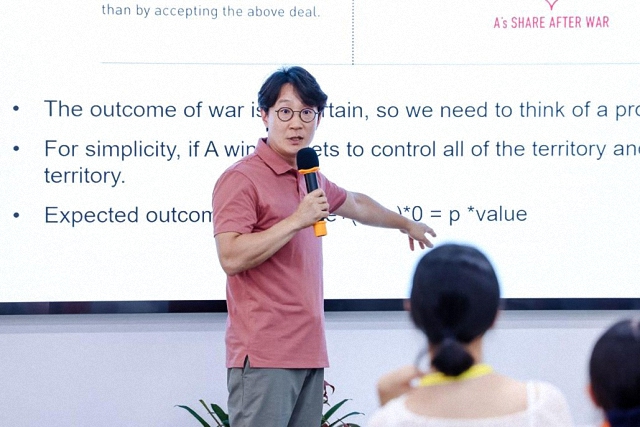
Prof. KIM Namkyu
Bridging Past and Future: Understanding the “Central Axis” of Beijing
In July 2024, UNESCO inscribed “The Central Axis of Beijing — A Masterpiece of the Ideal Capital Order in China” on the World Heritage List. The successful inscription not only added a world-class cultural landmark to Beijing but also created a new platform for global cultural exchange. Marking the first anniversary of the inscription, the forum invited XIA Mengchen (Planner at the Beijing Institute of City Planning and Design) to deliver a special lecture. She traced the spatial and temporal evolution of the Central Axis and elaborated on Beijing’s philosophy and practices in heritage preservation. A student from NTU remarked afterward that Ms. Xia’s talk, though not using exaggerated language, was deeply impactful—offering both a macro perspective and detailed professional insights into the Central Axis.
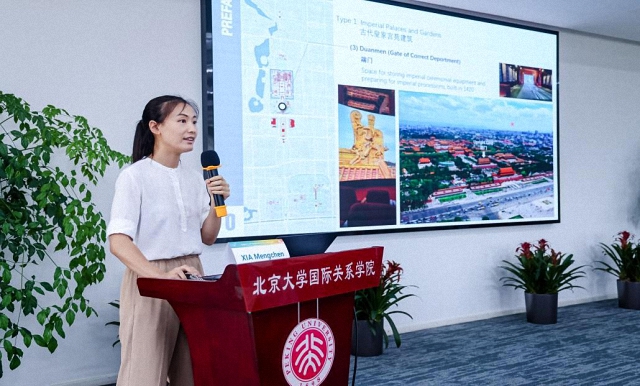
XIA Mengchen
With arrangements by the Beijing Institute of City Planning and Design, participants visited the Beijing Planning Exhibition Hall, the Imperial Ancestral Temple, the Altar of Land and Grain, the Bell and Drum Towers, and the Olympic Tower—landmarks along the Central Axis. They experienced firsthand the inclusive spirit and cultural diversity of traditional Chinese society embodied in this centuries-old urban order.
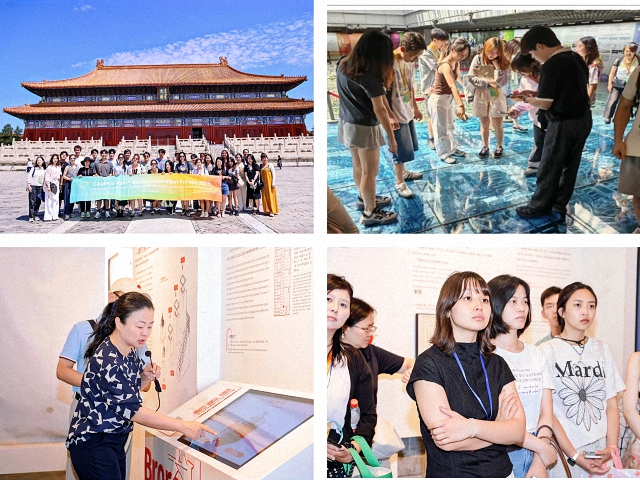
Visits
At each site, students closely observed over 700 years of history, listening to echoes of cultural fusion among Mongol, Manchu, Han, and other ethnic groups. From the top of the Olympic Tower, they viewed the historical Central Axis and its modern northern extension in harmony—an eloquent dialogue between tradition and modernity. In the Imperial Ancestral Temple and the Altar of Land and Grain, they learned about ancient state ritual systems and the “left-ancestral, right-altars” layout, experiencing how Eastern political philosophy is embodied in urban space. These encounters helped them understand Chinese civilization more objectively, fully, and vividly.
Students left messages such as: “Standing on Wanning Bridge, I could feel the antiquity of the Central Axis”; “The Ancestral Temple perfectly reflects Asia’s shared ‘family culture’”; “Climbing the Bell and Drum Towers, I experienced Chinese history in time itself.” For them, the Central Axis is not a static relic but a living, breathing space—an effective example of inclusive cultural heritage preservation and urban planning in Asia.
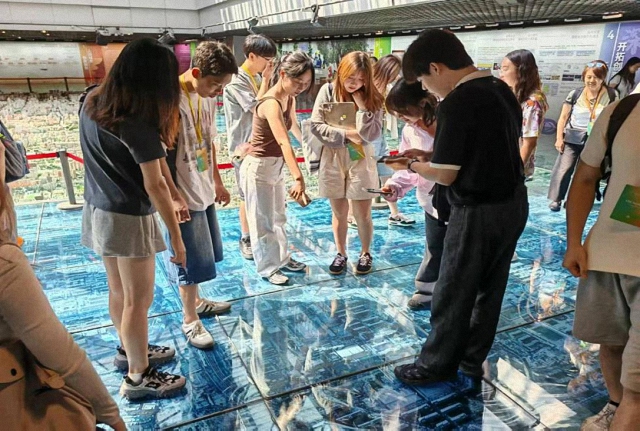
Students identifying landmarks in the exhibition hall
Co-Creation: Youth Solutions to Asian Challenges
In the final session, students worked in groups on “key challenges in achieving inclusive development in Asian societies.” They combined theory and research to address issues such as educational equity, aging populations, youth mental health, and foreign labor integration. Drawing on cross-country comparisons, they proposed innovative solutions tailored to different social groups.
Faculty members praised the group presentations, noting that in a short time, students from diverse countries and disciplines completed the full process from problem identification to proposal design. The reports reflected both the analytical and practical capacities of the “Campus Asia” youth and their collective potential to build more inclusive societies.
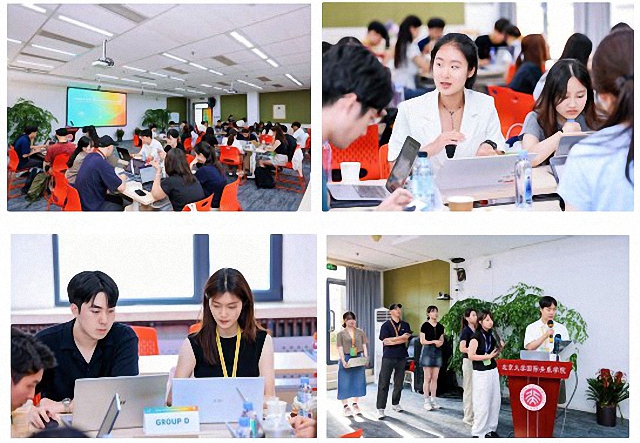
Group discussion and presentation
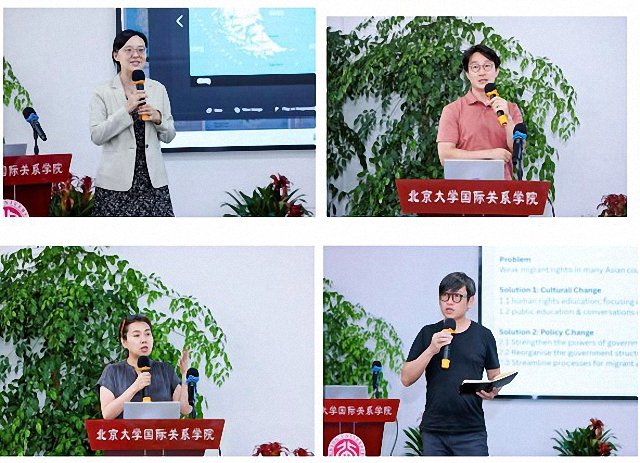
Faculty feedback
Harmony and Shared Future
At the forum’s conclusion, one international student said: “I always knew China had a long history, but I never understood it so deeply. This felt like a journey through time and space, bringing me closer to China—more understanding means less distance.”
The “Campus Asia” program, initiated by the governments of China, Japan, and the Republic of Korea, has become a flagship in higher education exchange after more than a decade of development. The joint statement of the Ninth Trilateral Summit highlighted that youth cultural exchange fosters mutual understanding and trust, building a solid foundation for future cooperation.
In the heart of Beijing—where ancient and modern intertwine—Asian youth transcended cultural boundaries, addressed shared challenges, and co-created a vision for inclusive development. This cross-cultural dialogue built bridges of understanding and showcased the dynamism and limitless potential of Asian youth in driving social innovation and sustainable development.
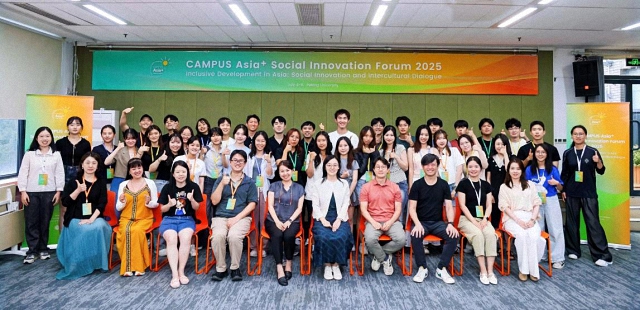
Group Photo
Written by: Chang Jiayi
Photo by: Tong Junjie, Chang Jiayi
Edited by: Chen Fang, You Zhuang